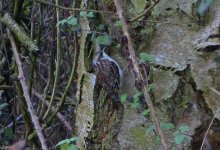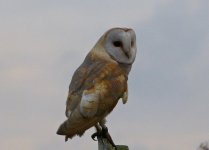Hi Afeather,
For starters, the Marsh Harrier you describe has been spotted earlier this year. I am hoping someone can provide a link to a photo I remember was posted here. It is an odd looking beast isn't it! I believe Ben Lewis photographed the bird at Strumpshaw Fen.
As for your Waders, I saw what I imagine to be the same group, although I was across the river so like you could not ID them with any certainty. Common Sandpiper would be unlikely during the Winter, and Green Sandpiper tend to frequent dykes and farmland at this time of year, and not in such number. It's interesting you say Turnstone, as 2 birds have been reported from the reserve. Unusual in the Yare Valley. I would guess that your birds are infact Dunlin, but open to other ideas!
Cheers,
Jim.






